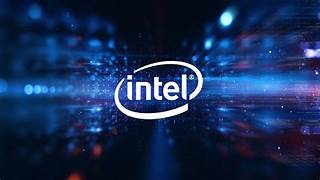
Intel to Slash Majority of Jobs as It Shuts Down Automotive Division in New Downsizing Drive

 :
| Updated On: 26-Jun-2025 @ 2:15 pm
:
| Updated On: 26-Jun-2025 @ 2:15 pmSHARE
Intel Corporation has initiated a new wave of job cuts as part of its ongoing global restructuring and cost-cutting plan under the leadership of its new CEO, Lip-Bu Tan. The company has filed a notice under California’s WARN Act, indicating that 107 employees at its Santa Clara headquarters will be laid off starting July 15. The WARN Act mandates advance notification when 50 or more employees are terminated within a 30-day period. This round of layoffs is a component of a broader restructuring initiative, which includes the planned termination of up to 20% of Intel’s global workforce by mid-July.
In addition to layoffs in California, Intel is shutting down its automotive chip division based in Munich, Germany. The division, which focused on software-defined vehicle platforms and was led by Intel veteran Jack Weast, is expected to be dissolved entirely, with most of its employees losing their jobs. The move reflects Intel’s strategic shift away from less profitable or non-core segments as the company seeks to streamline its operations and focus on more essential areas.
The layoffs will impact critical engineering roles essential to Intel’s chip development pipeline. This includes physical design engineers, product development specialists, logic engineers, and cloud software architects. Several senior leadership positions are also being eliminated, such as engineering managers, business leads, and even a vice president of IT. These layoffs affect teams involved in both CPU and GPU development projects at the Santa Clara facility.
An internal memo revealed by The Oregonian indicates that Intel’s in-house chip manufacturing division, which is central to the company’s foundry business, will also see a workforce reduction of up to 20%. This division, responsible for chip production, is expected to take the biggest hit during the restructuring process.
CEO Lip-Bu Tan has been transparent about his goals to reform Intel’s organizational culture. He emphasized the need to move away from the traditional mindset that equates success with managing large teams. Instead, the focus is on creating lean, high-performing teams that are more agile and capable of executing critical initiatives. Tan has reiterated that leadership will carefully align workforce reductions with strategic business priorities.
In addition to job cuts, Intel also plans to outsource segments of its marketing operations to consulting firm Accenture. The move includes leveraging artificial intelligence tools for managing customer communications, indicating a shift toward automation and external partnerships for non-core functions.
These developments come on the heels of Intel’s earlier layoffs in 2024, when the company terminated 15,000 employees. The ongoing restructuring is being positioned as one of the most substantial workforce changes in Intel’s recent history.
Intel’s layoffs also reflect a wider trend within the tech industry. According to Layoffs.fyi, more than 62,000 technology workers across major firms such as Microsoft, Google, Amazon, and Meta have lost their jobs in 2025 alone. The mass layoffs are a result of companies reassessing their strategic priorities and reducing costs amid changing market conditions and economic pressures.